Introduction: The Kolaramma Temple, situated in the historical town of Kolar, Karnataka, is a remarkable testament to India’s rich cultural and architectural heritage. This ancient temple, dedicated to Goddess Kolaramma, holds many intriguing secrets and lesser-known facts that add to its allure. This article will explore ten fascinating facts about the Kolaramma Temple that will captivate your curiosity and deepen your appreciation for this sacred site.
10 unknown facts about Kolaramma Temple
Fact 1: The Temple’s Age and Historical Significance
The Kolaramma Temple dates back a millennium, originating in the 10th century. Built during the reign of the Chola dynasty, this temple is a remarkable example of Dravidian architecture, showcasing intricate carvings and exquisite sculptures.
Fact 2: Dedicated to Goddess Kolaramma
The Kolaramma Temple is dedicated to Goddess Kolaramma, an embodiment of divine feminine energy. Devotees flock to this temple to seek blessings, protection, and fulfilment of their wishes. The Goddess is revered for her power and benevolence.
Fact 3: Architectural Marvels
The temple’s architecture is a sight to behold. The main shrine features intricate carvings depicting mythological scenes and celestial beings. The awe-inspiring gopuram (tower gateway) and the ornate sculptures showcase the exceptional craftsmanship of the artisans of that era.
Fact 4: Unique Stone Pillars
One of the fascinating features of the Kolaramma Temple is its collection of uniquely carved stone pillars. Each pillar boasts intricate detailing and tells a story from Hindu mythology. The craftsmanship and artistry displayed in these pillars are truly remarkable.
Fact 5: The Navaranga Mandapa
You’ll find the Navaranga Mandapa, a pillared hall with nine beautifully carved pillars within the temple complex. These pillars depict various gods and goddesses, showcasing the artistic finesse and devotion of the sculptors.
Fact 6: Sacred Water Pond
Adjacent to the temple is a sacred water pond known as ‘Kalyani.’ Devotees believe that dipping in this pond purifies the body and soul. The serene atmosphere surrounding the pond adds to the spiritual experience.
Fact 7: The Annual Kolaramma Fair
The Kolaramma Temple hosts a grand fair every year, attracting thousands of devotees and visitors. This vibrant event showcases cultural performances, traditional music, and a colourful marketplace where you can experience the local customs and traditions.
Fact 8: Miraculous Healing Powers
The Kolaramma Temple is renowned for its believed healing powers. Devotees have shared numerous accounts of experiencing miraculous recoveries from ailments and finding solace in the presence of Goddess Kolaramma.
Fact 9: The Nandi Bull Sculpture
At the temple entrance, you’ll find an imposing sculpture of Nandi, the sacred bull and vehicle of Lord Shiva. This intricate sculpture exemplifies the temple’s attention to detail and reverence for deities beyond Goddess Kolaramma.
Fact 10: Legends and Mythological Connections
The Kolaramma Temple is steeped in fascinating legends and mythological connections. One of the numerous legends about this temple’s link to the Mahabharata epic holds that it served as a haven for the exiled Pandavas.
Kolaramma Temple: The Divine Abode of Goddess Kolaramma
The Kolaramma Temple holds immense religious significance and attracts devotees from far and wide. The relationship between the Goddess and the Kolaramma Temple is explained in the following details.
Goddess Kolaramma: is revered as the presiding deity of the Kolaramma Temple. She is revered as an embodiment of Shakti, the divine feminine energy in Hindu mythology. Devotees worship her for blessings, protection, and fulfilment of their desires.
Iconography: The idol of Goddess Kolaramma at the temple is made of black granite and stands majestically in the sanctum sanctorum. She is depicted as a four-armed deity, holding various attributes symbolizing her divine powers. The Goddess is adorned with traditional ornaments and embellishments.
Legends and Mythology: The temple’s origin and association with Goddess Kolaramma are steeped in mythology. One popular legend suggests that the Pandavas from the Mahabharata sought shelter at this temple during their exile, and the Goddess protected them.
Rituals and Worship: The Kolaramma Temple follows a strict ritualistic worship pattern to honour Goddess Kolaramma. Priests perform daily pujas (rituals), and devotees offer prayers, flowers, and coconuts as offerings to seek the Goddess’s blessings.
Festivals: The temple celebrates various festivals yearly with great pomp and enthusiasm. The annual Kolaramma Fair is a highlight, drawing devotees and visitors from near and far. Cultural performances, processions, and religious rituals are integral to these festive celebrations.
Spiritual Significance: Devotees believe worshipping Goddess Kolaramma at this temple brings protection, prosperity, and spiritual enlightenment. Many devotees have reported experiencing peace and divine energy within the temple premises.
Historical Importance: The Kolaramma Temple has a rich historical legacy. It was built during the Chola dynasty, showcasing the architectural brilliance of the era. The intricate carvings, ornate sculptures, and towering gopuram (gateway) testify to the temple’s historical and cultural significance.
Associated Deities: Alongside Goddess Kolaramma, the temple complex also houses other deities. Lord Ganesha, Lord Subramanya, and Lord Shiva are worshipped in separate shrines within the temple premises.
Spiritual Practices and Offerings: Devotees often engage in spiritual practices such as chanting mantras, performing aarti (ceremonial waving of lamps), and participating in bhajans (devotional songs) to express their devotion to Goddess Kolaramma. They also offer special prayers and perform homa (fire ritual), seeking her blessings.
Visitor Experience: The Kolaramma Temple offers devotees and visitors a serene and sacred ambience. The spiritual atmosphere and the temple’s grandeur create a memorable experience for all who visit.
The Kolaramma Temple continues to be a specific site of worship and a significant cultural monument because of its enduring spiritual traditions and devotion to the Goddess Kolaramma. It remains a symbol of faith and devotion, attracting devotees who seek solace, blessings, and a deeper connection with the divine.
Kolaramma Temple: Tracing the Historical Journey of an Ancient Shrine
Kolaramma Temple has a rich and intriguing history that spans over a millennium. Let’s explore this famous temple’s long history in detail:
Chola Dynasty: The Kolaramma Temple’s beginnings may be found in the 10th century, under the Chola dynasty’s rule. The Chola monarchs, renowned for their support of the arts and architecture, significantly influenced the temple’s growth and construction.
Dravidian Architecture: The Kolaramma Temple is an architectural marvel that showcases the splendour of the Dravidian style. This style is characterized by intricately carved stone pillars, majestic gopurams (tower gateways), and elaborate sculptures depicting scenes from Hindu mythology.
Historical Inscriptions: The temple’s history is further documented through ancient inscriptions found on its premises. These inscriptions provide valuable insights into the temple’s construction, renovations, and contributions from different dynasties over the centuries.
Vijayanagara Empire: The Vijayanagara Empire, renowned for its advances in culture and architecture, greatly impacted the temple during the 14th and 16th centuries. The rulers of this empire made notable contributions to the temple’s development and conducted various religious activities.
Mysore Wodeyars: In the 17th century, the Mysore Wodeyar dynasty, under the rule of Chikkadevaraja Wodeyar, patronized the Kolaramma Temple and made substantial contributions to its growth and prosperity. They enhanced the temple complex, performed renovations, and ensured the continuation of religious rituals.
Historical Events: The Kolaramma Temple has witnessed various historical events over the centuries. It served as a refuge for the Pandavas during their exile, as mentioned in the Mahabharata, further adding to its historical significance and mythology.
Cultural Exchange: The Kolaramma Temple is a testament to the cultural exchange between different dynasties and regions. The temple’s architecture and sculptures reflect influences from the Cholas, Vijayanagara Empire, Hoysalas, and other artistic traditions.
Preservation and Restoration: The temple has undergone several renovations and restoration efforts to preserve its historical and architectural heritage. The Karnataka State Archaeology Department and temple authorities have safeguarded the temple’s structural integrity and ensured its continued splendour.
Present-Day Significance: Today, the Kolaramma Temple continues to be an active place of worship, attracting devotees and visitors worldwide. It stands as a symbol of religious and cultural heritage, carrying forward the traditions and practices of ancient times.
Heritage Tourism: The historical and architectural significance of the Kolaramma Temple has made it a popular destination for heritage tourism. Visitors are drawn to the temple’s timeless beauty, cultural significance, and the sacred site’s spiritual aura.
The history of the Kolaramma Temple is a tapestry of dynasties, cultural influences, and religious devotion. It stands as a testament to India’s architectural and spiritual heritage’s enduring legacy, captivating all who step foot within its sacred precincts.
Kolaramma Temple timings
| Day of the Week | Temple Opening Time | Temple Closing Time |
| Monday | 6:00 AM-4:30 PM | 12:30 PM-8:30 PM |
| Tuesday | 6:00 AM-4:30 PM | 12:30 PM-8:30 PM |
| Wednesday | 6:00 AM-4:30 PM | 12:30 PM-8:30 PM |
| Thursday | 6:00 AM-4:30 PM | 12:30 PM-8:30 PM |
| Friday | 6:00 AM-4:30 PM | 12:30 PM-8:30 PM |
| Saturday | 6:00 AM-4:30 PM | 12:30 PM-8:30 PM |
| Sunday | 6:00 AM-4:30 PM | 12:30 PM-8:30 PM |
Kolaramma Temple Pooja timings
Kolaramma Temple’s various pooja timings:
Pooja Timing
| Suprabhatha Seva | 6:00 AM |
| Maha Mangala Aarti | 7:30 AM |
| Sahasranama Archana | 9:00 AM – 11:30 AM |
| Maha Mangala Aarti | 12:00 PM |
| Alankara Seva | 6:00 PM – 7:00 PM |
| Maha Mangala Aarti | 7:30 PM |
| Ratri Pooja | 8:00 PM – 8:30 PM |
kolaramma temple Photos



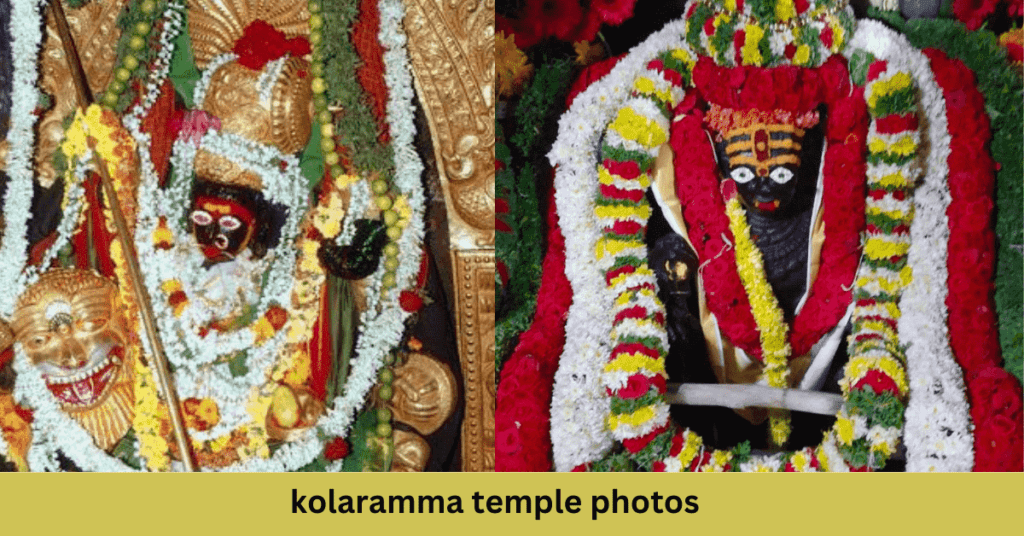




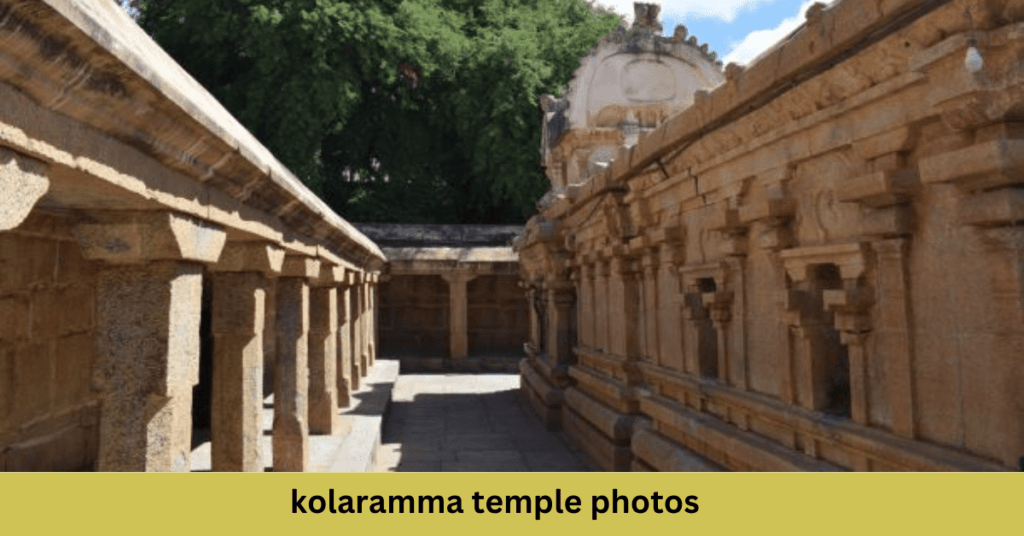
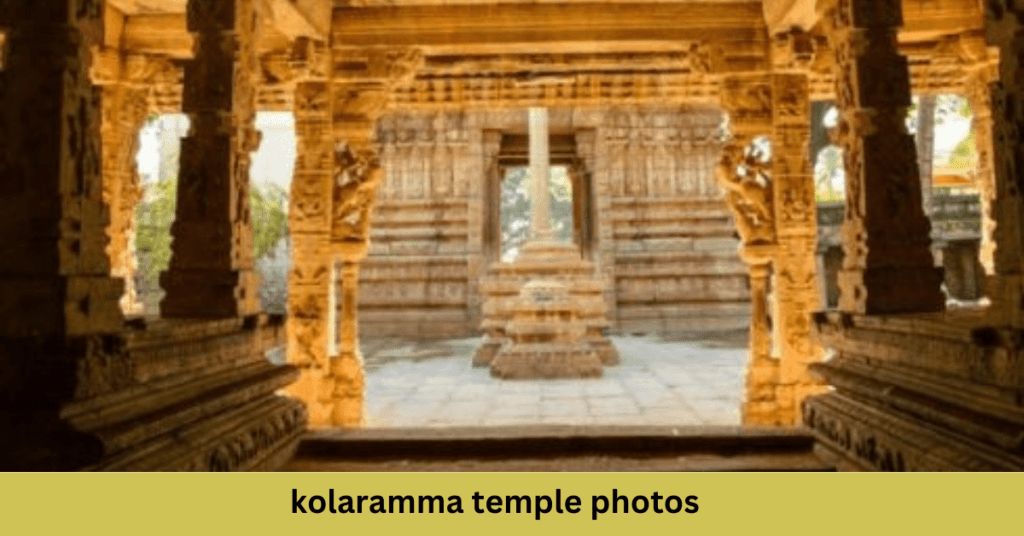
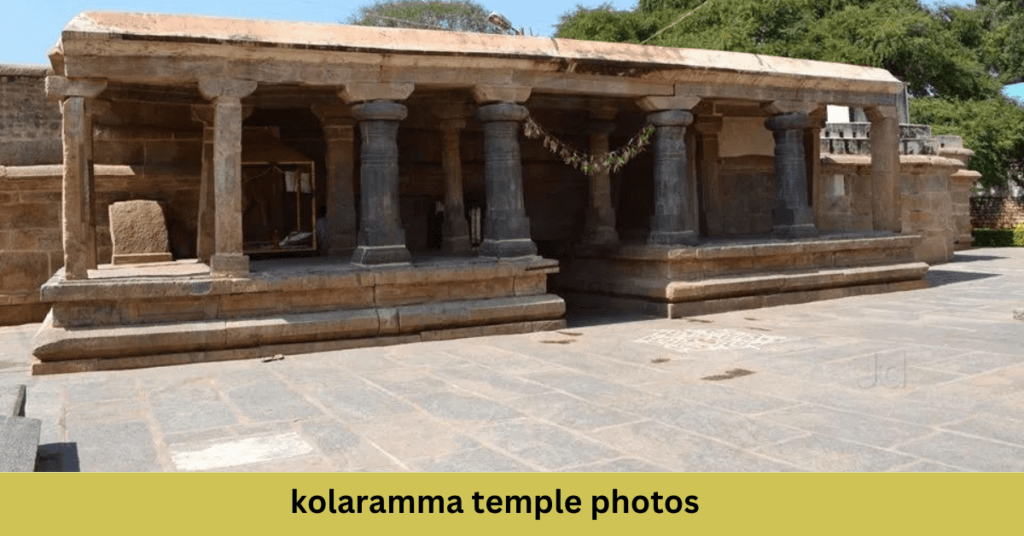
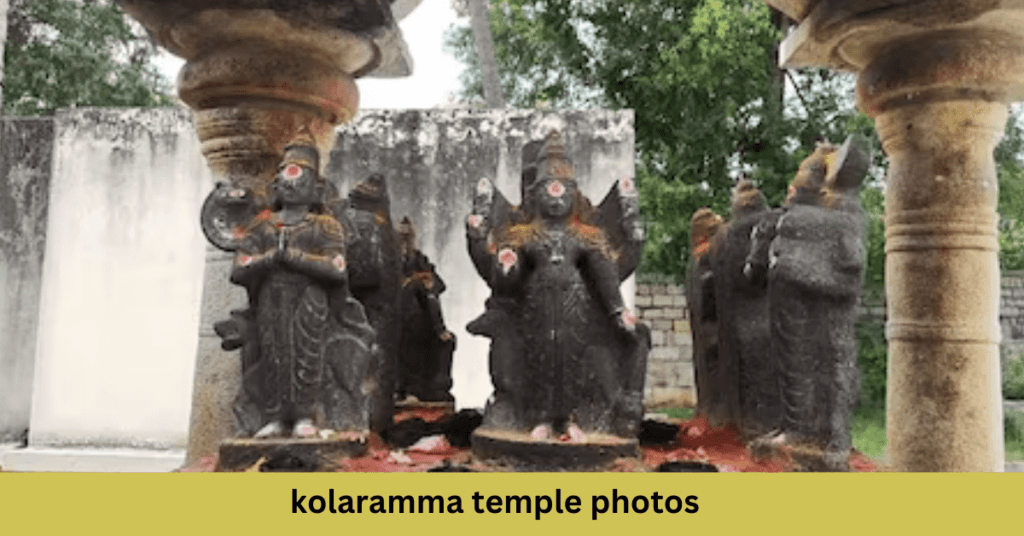
Conclusion
The Kolaramma Temple is a place of worship and a treasure trove of history, art, and spiritual significance. With its ancient origins, breathtaking architecture, and intriguing facts, this temple continues to inspire awe and captivate the hearts of visitors. Exploring its fascinating facts deepens our understanding of its cultural significance and enhances our appreciation for the enduring legacy of this sacred site.
